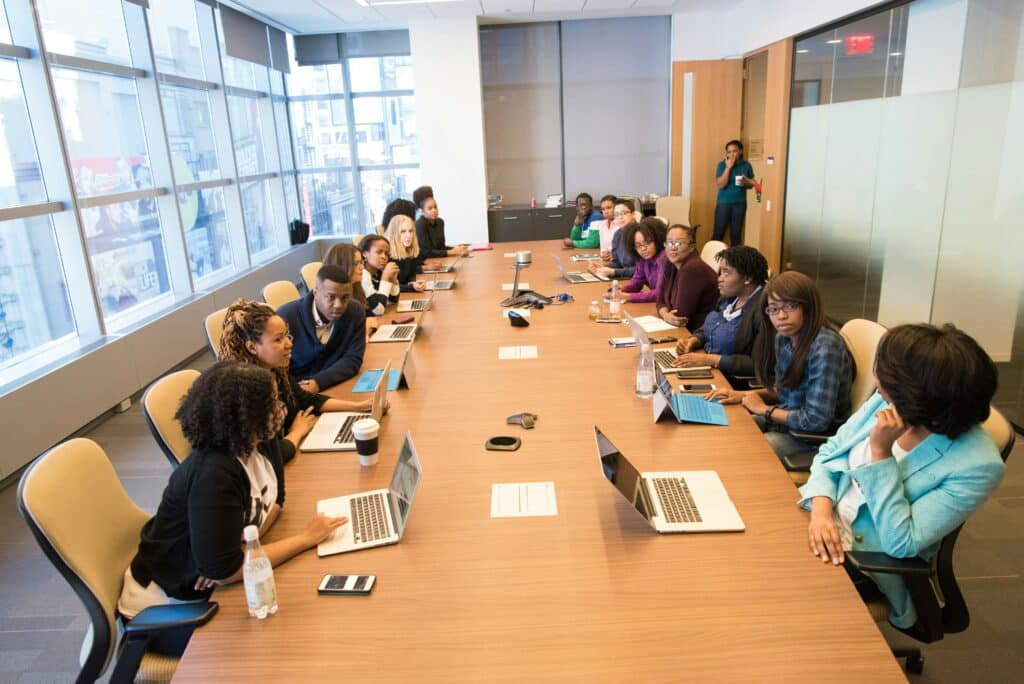Unconscious bias – it’s one of those phrases that gets thrown around a lot in the world of HR and management, but what does it actually mean? More importantly, how can we tackle it in our workplaces? Let’s dive into what unconscious bias is, why it’s so crucial to address, the issues it can cause, and most importantly, how to avoid unconscious bias in your own team.
What Is Unconscious Bias?
Unconscious bias refers to the attitudes or stereotypes that affect our understanding, actions, and decisions in an unconscious manner. Unlike explicit biases, these biases operate automatically and without conscious awareness. Imagine your brain as a super-efficient processor, constantly scanning and assigning information to help you make quick decisions. While this is incredibly helpful for day-to-day tasks, it can also lead to snap judgments about people based on characteristics like race, gender, age, or even accents – judgments you’re not even aware you’re making. 39% of survey respondents said they experience bias at least once a month, regarding it as “frequent”.

Why Is Unconscious Bias Important to Address?
Addressing unconscious bias is more than just a box to tick; it’s about fostering a fair, inclusive, and productive workplace. When left unchecked, unconscious biases can influence who gets hired, who gets promoted, who gets mentored, and even who gets included in certain projects. Over time, these small, seemingly insignificant decisions can create a workplace culture that lacks diversity, stifles innovation, and breeds dissatisfaction among employees.
In short, unconscious bias can hinder your company’s ability to attract and retain top talent, impact employee morale, and ultimately, affect your bottom line. In a world where businesses are increasingly aware of the need for diversity and inclusion, understanding and learning how to avoid unconscious bias is essential.
The Issues Caused by Unconscious Bias
Unconscious bias can manifest in many ways, and its impact can be profound:
Hiring Decisions: Unconscious bias often plays a role in hiring. For instance, recruiters might prefer candidates who share similar backgrounds, experiences, or even names as their own. This can lead to a lack of diversity within the team, as well as missed opportunities to bring in fresh perspectives.
Performance Evaluations: Bias can also creep into how employees are evaluated. Employees who don’t fit the “traditional” character of leadership might be overlooked for promotions, while others are unfairly selected. This not only demotivates employees but can also lead to legal repercussions.
Team Dynamics: Bias can affect the day-to-day interactions within a team. Employees might unconsciously gravitate towards colleagues who are similar to them, leaving others feeling excluded. This can stifle collaboration and create a divided workplace.
Project Assignments: Managers might unconsciously assign high-profile projects to the same individuals over and over, based on preconceived notions of their abilities. This can prevent others from showcasing their skills and stunts professional growth across the team.

Examples of Unconscious Bias in the Workplace
Here are a few common examples of unconscious bias that can occur in any workplace:
Affinity Bias: This happens when we prefer people who are like us, whether it’s shared interests, backgrounds, or experiences. While it’s natural to bond with those who share similarities, it can lead to unfairness and a lack of diversity in teams.
Gender Bias: Despite strides in equality, gender bias still exists. For example, a manager might unconsciously assume a woman is less committed to her career because she has young children, leading to fewer opportunities for advancement. This is apparent with 52% of mothers experiencing some form of discrimination at work.
Halo Effect: If someone excels in one area, we might assume they are competent in all areas. Conversely, if someone makes a mistake early on, we might view all their work through a negative lens. This can lead to unfair evaluations and missed opportunities.
Name Bias: Studies have shown that candidates with “ethnic-sounding” names are less likely to be called for interviews, even if their qualifications are identical to those with more “traditional” names. This type of bias can severely limit the diversity of your talent pool.

Tips for Avoiding Unconscious Bias in the Workplace
Now that we’ve covered what unconscious bias is and the impact it can have, let’s talk about how to avoid unconscious bias. Here are some practical steps you can take to reduce it in your workplace:
1. Educate Yourself and Your Team: The first step in tackling unconscious bias is awareness. Provide training sessions and workshops for your team to help them notice and understand their own biases. Encourage open discussions about bias and its effects on decision-making.
2. Update Processes: Implement structured processes for hiring, promotions, and performance evaluations. Use up-to-date questions during interviews, set clear criteria for promotions, and base performance reviews on measurable outcomes rather than subjective opinions.
4. Diverse Hiring Panels: Ensure that your hiring panels are diverse. A mix of perspectives can help mitigate individual biases and lead to more balanced hiring decisions.
5. Anonymous Applications: Consider using anonymous applications during the initial screening process. Removing names, genders, and other identifiable information can help focus attention on the candidate’s qualifications and experience.
6. Encourage Diverse Teams: Actively work to create diverse teams within your business. Diversity should be a factor in project assignments, mentorship opportunities, and leadership development programs.
7. Regularly Review Policies: Continuously review your company’s policies and practices to ensure they are inclusive. This includes everything from your recruitment strategies to your company’s social events.
8. Foster an Inclusive Culture: Create a workplace culture where diversity is valued and everyone feels included. Encourage team members to speak up if they notice bias and provide them with the tools to do so in a constructive way.

Final Thoughts
Unconscious bias is something we all have, but it doesn’t have to control our workplaces. By acknowledging our biases and actively working to mitigate them, we can create a more inclusive, diverse, and successful business. It’s not about pointing fingers or assigning blame; it’s about fostering an environment where everyone has the opportunity to thrive. And at Virgin Incentives, we believe that when employees feel valued and included, they are more motivated, engaged, and productive—something that benefits everyone.
Now you know how to avoid unconscious bias at work, get in touch with us below to find out about the fantastic inclusive rewards and gifts we offer for your business and your employees:

